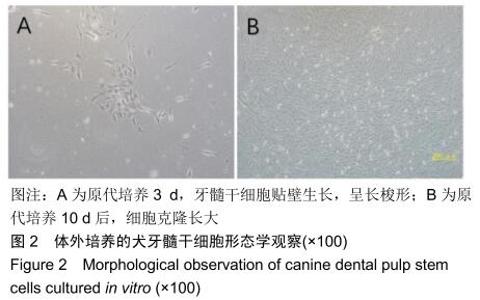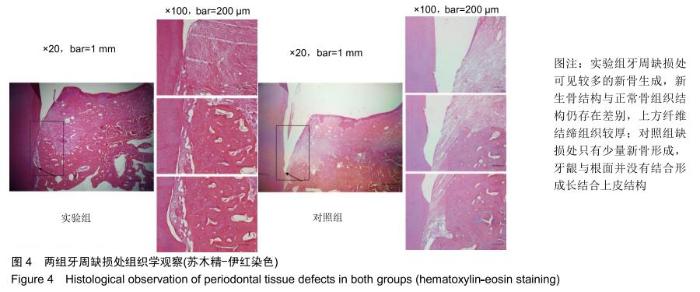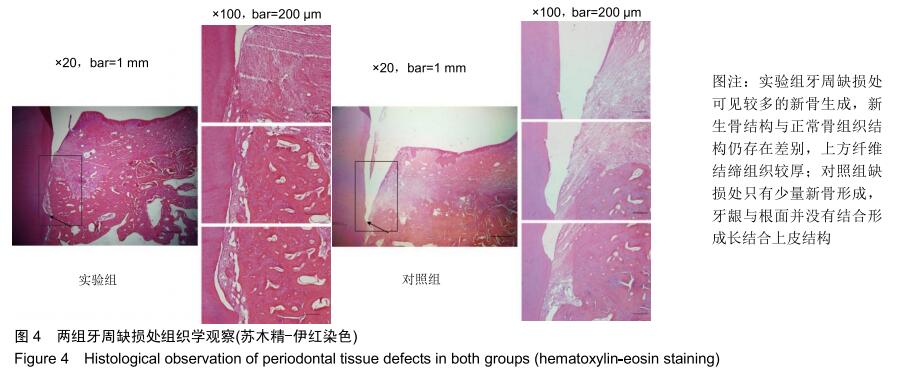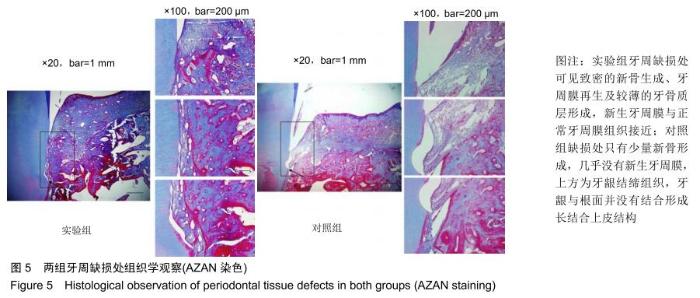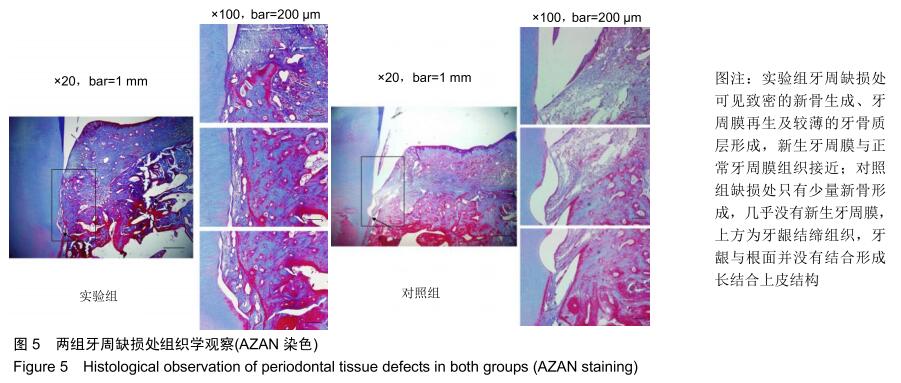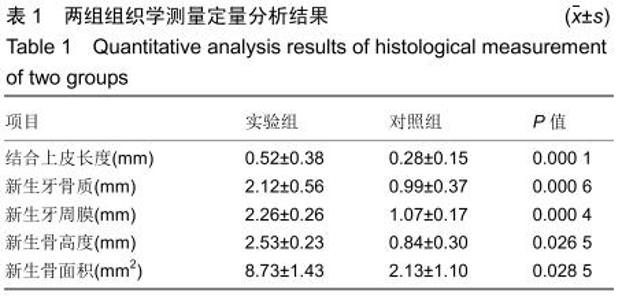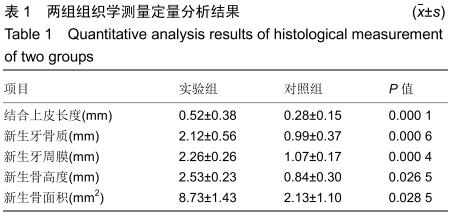|
[1] BERG JO, BLOMLÖF L. Cellular reactions in pulpal and periodontal tissues after periodontal wound debridement.J Clin Periodontol.1990;17(3):165-173.
[2] CHEN FM, ZHANG J, ZHANG M, et al. A review on endogenous regenerative technology in periodontal regenerative medicine. Biomaterials.2010;31(31):7892-7927.
[3] SCULEAN A, NIKOLIDAKIS D, NIKOU G, et al. Biomaterials for promoting periodontal regeneration in human intrabony defects: a systematic review.Periodontol 2000. 2015;68(1):182-216.
[4] HO SP, KURYLO MP, FONG TK, et al. The biomechanical characteristics of the bone-periodontal ligament-cementum complex. Biomaterials.2010;31(25):6635-6646.
[5] CHEN G, CHEN J, YANG B, et al. Combination of aligned PLGA/Gelatin electrospun sheets,native dental pulp extracellular matrix and treated dentin matrix as substrates for tooth root regeneration.Biomaterials.2015;52(1):56-70.
[6] PARK CH, RIOS HF, JIN Q, et al.Tissue engineering bone-ligament complexes using fiber-guiding scaffolds. Biomaterials. 2012;33(1):137-145.
[7] 杨雪婷,杨波,田卫东.牙周组织工程新技术的研究进展[J].中华口腔医学杂志,2018,53(7):490-494.
[8] GRONTHOS S, MANKANI M, BRAHIM J, et al. Postnatal human dental pulp stem cells (DPSCs) in vitro and in vivo.Proc Natl Acad Sci U S A.2000;97(25):13625-13630.
[9] CAO Y, LIU Z, XIE Y, et al. Adenovirus-mediated transfer of hepatocyte growth factor gene to human dental pulp stem cells under good manufacturing practice improves their potential for periodontal regeneration in swine.Stem Cell Res Ther.2015;6(1): 249.
[10] HU J, CAO Y, XIE Y, et al. Periodontal regeneration in swine after cell injection and cell sheet transplantation of human dental pulp stem cells following good manufacturing practice. Stem Cell Res Ther.2016;7(1):130.
[11] KHORSAND A, ESLAMINEJAD MB, ARABSOLGHAR M, et al. Autologous dental pulp stem cells in regeneration of defect created in canine periodontal tissue.J Oral Implantol. 2013;39(4): 433-443.
[12] LIU HC, E LL, WANG DS, et al. Reconstruction of alveolar bone defects using bone morphogenetic protein 2 mediated rabbit dental pulp stem cells seeded on nano-hydroxyapatite/ collagen/ poly(L-lactide).Tissue Eng Part A. 2011;17(19-20): 2417-2433.
[13] LI Y, ZHAO S, NAN X, et al. Repair of human periodontal bone defects by autologous grafting stem cells derived from inflammatory dental pulp tissues.Stem Cell Res Ther. 2016;7(1):141.
[14] CHEN YY, HE ST, YAN FH, et al. Dental pulp stem cells express tendon markers under mechanical loading and are a potential cell source for tissue engineering of tendon-like tissue.Int J Oral Sci. 2016;8(4):213-222.
[15] REYNOLDS MA, AICHELMANN-REIDY ME. Regeneration of periodontal tissue:bone replacement grafts.Dent Clin North Am. 2010;54(1):55-71.
[16] LARSSON L, DECKER AM, NIBALI L, et al. Regenerative Medicine for Periodontal and Peri-implant Diseases.J Dent Res. 2016;95(3):255-266.
[17] AMGHAR-MAACH S, GAY-ESCODA C. Regeneration of periodontal bone defects with dental pulp stem cells grafting: Systematic Review.J Clin Exp Dent.2019;11(4):e373-e381.
[18] YASUI T, MABUCHI Y, TORIUMI H, et al. Purified Human Dental Pulp Stem Cells Promote Osteogenic Regeneration.J Dent Res. 2016;95(2):206-214.
[19] PETRIDIS X, DIAMANTI E, TRIGAS GCH, et al. Bone regeneration in critical-size calvarial defects using human dental pulp cells in an extracellular matrix-based scaffold.J Craniomaxillofac Surg. 2015;43(4):483-490.
[20] TABATABAEI FS. In vitro proliferation and osteogenic differentiation of endometrial stem cells and dental pulp stem cells. Cell Tissue Bank.2017;18(2):239-247.
[21] 周婷茹,李永生.牙髓干细胞成骨微环境的研究进展[J].国际口腔医学杂志,2019,46(6):675-679.
[22] KIM CS, CHOI SH, CHAI JK, et al. Periodontal repair in surgically created intrabony defects in dogs: influence of the number of bone walls on healing response.J Periodontol. 2004;75(2):229-235.
[23] TASSI SA, SERGIO NZ, MISAWA MYO. Efficacy of stem cells on periodontal regeneration: Systematic review of pre-clinical studies. J Periodontal Res.2017;52(5):793-812.
[24] FERRAROTTI F, ROMANO F, GAMBA MN, et al. Human intrabony defect regeneration with micrografts containing dental pulp stem cells: A randomized controlled clinical trial.J Clin Periodontol.2018;45(7):841-850.
[25] HU L, LIU Y. Stem cell-based tooth and periodontal regeneration. Oral Dis.2018;24(5):696-705.
[26] CHO YD, KIM KH, RYOO HM, et al. Recent Advances of Useful Cell Sources in the Periodontal Regeneration.Curr Stem Cell Res Ther.2019;14(1):3-8.
[27] ASHRI NY, AJLAN SA. Dental pulp stem cells. Biology and use for periodontal tissue engineering.Saudi Med J. 2015;36(12):1391-1399.
[28] WANG Y, CHEN X, CAO W. Plasticity of mesenchymal stem cells in immunomodulation: pathological and therapeutic implications. Nat Immunol.2014;15(11):1009-1016.
[29] ANDRUKHOV O, BEHM C, BLUFSTEIN A. Immunomodulatory properties of dental tissue-derived mesenchymal stem cells: Implication in disease and tissue regeneration.World J Stem Cells. 2019;11(9):604-617.
[30] 蔡俊瑶,文添卉,邓丹,等.网状组织工程肌腱支架增强体的降解性能[J].东华大学学报(自然科学版),2010,36(5):491-495,562.
[31] KIM HS, KIM KH, KIM SH, et al. Immunomodulatory effect of canine periodontal ligament stem cells on allogenic and xenogenic peripheral blood mononuclear cells.J Periodontal Implant Sci.2010;40(6):265-270.
[32] TOMIC S, DJOKIC J, VASILIJIC S, et al. Immunomodulatory properties of mesenchymal stem cells derived from dental pulp and dental follicle are susceptible tcco activation by toll-like receptor agonists. Stem Cells Dev.2011;20(4):695-708.
[33] 李敏,王瑶,于华龙,等.人牙周韧带细胞-聚羟基乙酸支架复合体修复牙周组织缺损[J].中国组织工程研究,2016,20(12):1718-1724.
|
